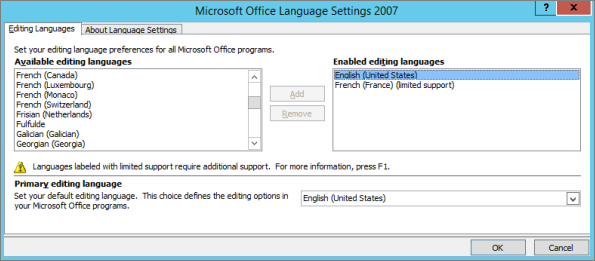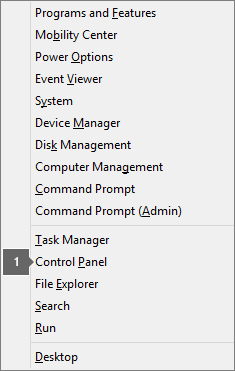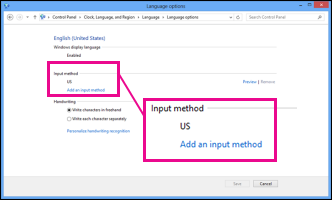Add a language or set language preferences in Office 2007
Microsoft Office 2007 Language Settings turn on language-specific options, such as options available for a particular language in the Ribbon and dialog boxes. For example, when you turn on the language options for Japanese, the Phonetic Guide and Enclose characters language options are turned on.
If you install a 2007 Microsoft Office Language Pack, you can change the language of the Ribbon, menus, dialog boxes, and Help to the Language Pack language. Additionally, you can use proofing tools, such as spelling or grammar checker in another language. For more information about Language Pack features, see Office Language Interface Pack (LIP) downloads.
In Office 2007, language options are in the Microsoft Office Language Settings 2007 dialog box. (For later versions of Office, see Add a language or set language preferences in Office.)

Add a language
To add a language in Office 2007 programs, first make sure that the language that you want to use is installed on your computer. If you need a Language Pack for a particular language, see Office Language Interface Pack (LIP) downloads. Then, you must enable the language that you want to use. The language-specific options that are turned on depend on the language(s) that are enabled and the programs that you use.
-
Click Start >All Programs >Microsoft Office > Microsoft Office Tools > Microsoft Office 2007 Language Settings.
-
Click the Editing Languages tab.
-
Select the language you want to enable in the Available editing languages list, and then click Add.
The language is added to the Enabled editing languages list and all language-specific options available in 2007 Office release programs are turned on.
The default editing language appears at the bottom of the Editing Languages tab. If needed, this can be changed by selecting the language you want in the Primary editing language list.
When you change the primary editing language, the Normal.dotm template in Word is automatically replaced. We recommend that you save a copy of Normal.dotm and rename it with its language, for example, Normal_English.dotm, before you change the primary editing language. The Normal.dotm template is typically saved to C:\Users\username\AppData\Roaming\Microsoft\Templates, where "username" is the name of the person who is logged on to the computer.
Note: You cannot remove a language from the Enabled editing languages list if that language is set as the primary editing language. To remove the language from the Enabled editing languages list, you must first select another language in the Primary editing language list, and then remove the language from the Enabled editing languages list.
Change the display and Help language
Important: A Language Pack may be required to change the display and Help language. If you have not installed a Language Pack for the language that you want to use, see Office Language Interface Pack (LIP) downloads.
-
Click Start > All Programs > Microsoft Office > Microsoft Office Tools > Microsoft Office 2007 Language Settings.
-
Click the Display Language tab.
Note: The Display Language tab is only visible after you install a Language Pack. To install a language pack, see Office Language Interface Pack (LIP) downloads.
-
Select the language that you want to use for the Ribbon, menus, and dialog boxes from the Display Microsoft Office menus and dialog boxes in list.
-
Select the language that you want to use for Help from the Display Help in list.
-
If you have three or more languages installed, the Display language priority order list is displayed. To change the language priority, select a language in the list, and then click Up or Down.
What does limited support mean?
If you see (limited support) after a language in the Enabled editing languages list, it means that the language options for that language are turned on but the keyboard layout for that language has not been installed in the Windows operating system.

If you want to use the same keyboard layout for all enabled languages, you can safely ignore the (limited support) message for your languages. If you want to use a keyboard layout for a language that has limited support, you must enable the keyboard layout for that language.
Enable a keyboard layout
If you want to type in a non-Latin-based language, such as Arabic or Chinese, or you want to use the native language keyboard layout when typing in different Latin-based languages, you need to enable the keyboard layout for that language, and then you can switch between languages using the Language bar.
Enable Office 2007 keyboard layouts in Windows 10, Windows 8.1, and Windows 8
-
Press the Windows logo key + X, and then click Control Panel.

-
Under Clock, Language, and Region, click Change input methods.
-
For the language you want to add, click Options.

-
Under Input method, click Add an input method. You can even click Preview to see what the input device is like.

-
Click the input method you want, and then click Add.

Enable Office 2007 keyboard layouts in Windows 7 and Windows Vista
-
Click Start > Control Panel.
-
Under Clock, Language, and Region, under Region and Language, click Change keyboards or other input methods.
Note: In Classic View, double-click Regional and Language Options, and then click the Keyboards and Languages tab.
-
In the Region and Language dialog box, on the Keyboards and Languages tab, click Change keyboards
 .
. -
In the Text Services and Input Languages dialog box, under Default input language, click the language that you want to use as the default language.
If the language that you want to use as the default input language is not listed, complete steps 5 through 8.
-
Under Installed services, click Add.
-
Expand the language that you want to use as the default input language, and then expand Keyboard.
-
Select the check box for the keyboard or Input Method Editor (IME) that you want to use, and then click OK. The language is added to the Default input language list.
In Windows XP (for Office 2010 and 2007)
-
Click Start, point to Settings, and then click Control Panel.
-
Click Date, Time, Language, and Regional Options, and then click Regional and Language Options.
Note: In Classic View, double-click Regional and Language Options.
-
In the Regional and Language Options dialog box, click the Languages tab, and then under Text services and input languages, click Details.
-
In the Text Services and Input Languages dialog box, under Installed services, click Add.
-
In the Add Input Language dialog box, click the language that you want from the Input language list, and then click OK.
Microsoft Office Tutorials: Add A Language Or Set Language Preferences In Office 2007 >>>>> Download Now
ReplyDelete>>>>> Download Full
Microsoft Office Tutorials: Add A Language Or Set Language Preferences In Office 2007 >>>>> Download LINK
>>>>> Download Now
Microsoft Office Tutorials: Add A Language Or Set Language Preferences In Office 2007 >>>>> Download Full
>>>>> Download LINK K6